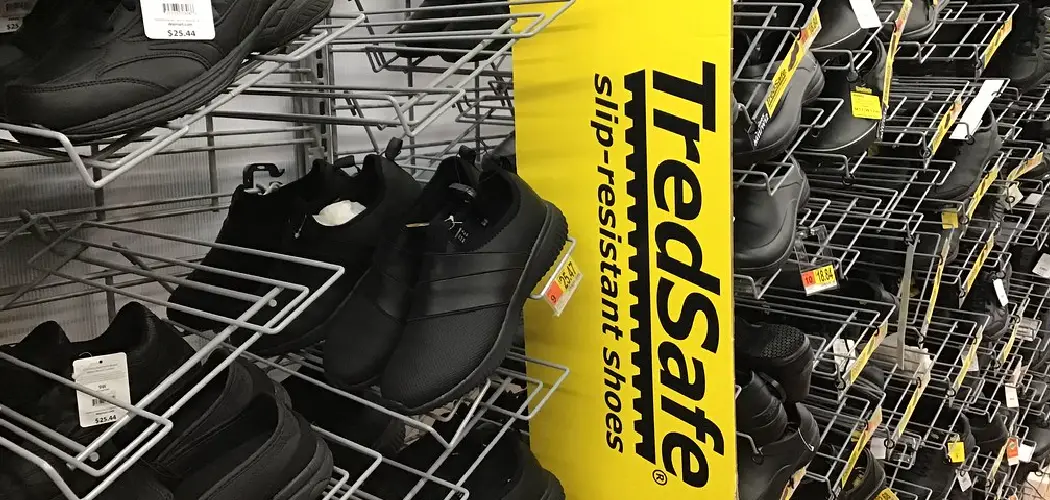Are you constantly worried about slipping, tripping, or falling at work? You are not alone.
Slip-resistant shoes are specifically designed to minimize the risk of slipping and falling, especially in environments where floors may be wet or oily. These shoes employ specialized rubber outsoles that feature intricate tread patterns, which enhance traction by providing a better grip on various surfaces. The unique design of the tread channels away liquids that might otherwise cause a person to slip, ensuring stability and safety.
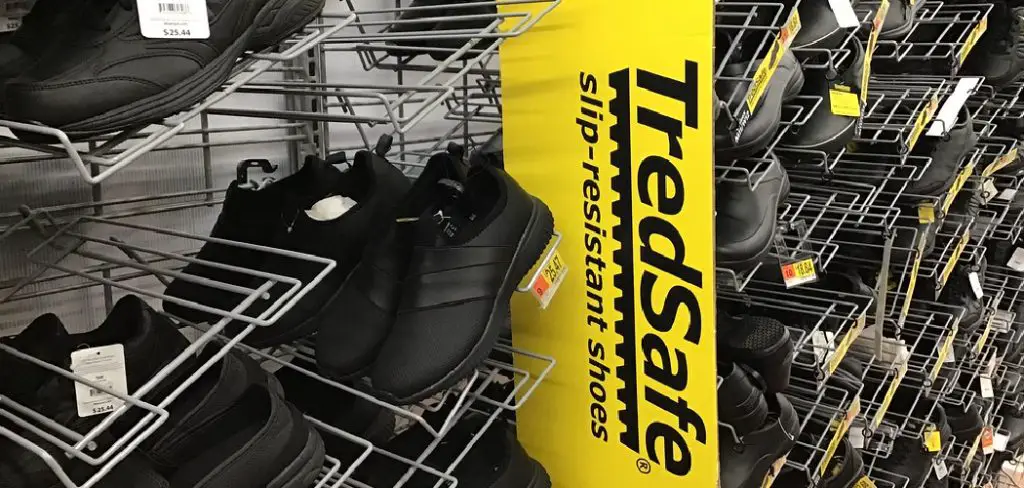
Additionally, the rubber compound used in these soles is often softer and more flexible, allowing for increased surface contact and grip. In this guide on how do slip resistant shoes work, we will discuss the technology and features behind these essential safety shoes.
What Will You Need?
- Your favorite pair of slip-resistant shoes
- A wet or oily surface (optional)
Once you have these items, you can follow along with the steps below to learn more about how slip-resistant shoes work.
10 Easy Steps on How Do Slip Resistant Shoes Work
Step 1: Examine the Outsole
Begin by closely examining the outsole of your slip-resistant shoes. The outsole is the bottom portion of the shoe that comes in direct contact with the ground. Look for patterns on the rubber surface, such as grooves or small lugs, specifically engineered to enhance traction. These intricate designs are critical in channeling away liquids and providing a better grip on slippery surfaces.
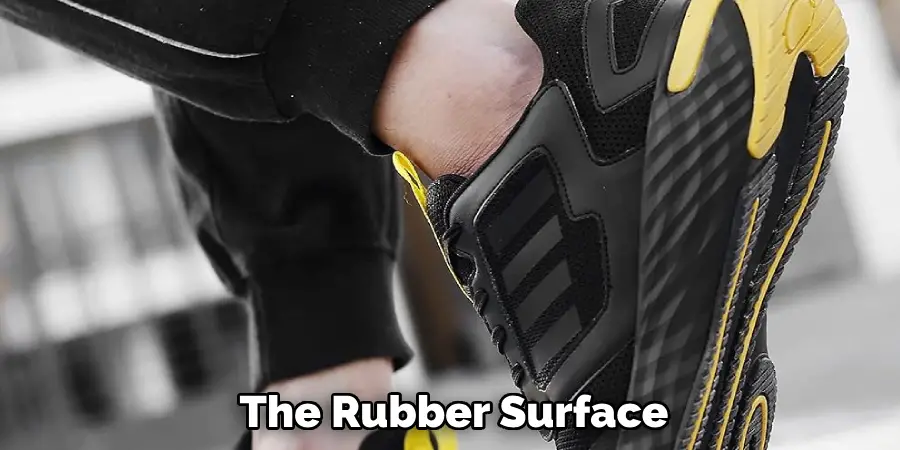
Notice the material; typically, it is a softer rubber compound, which allows for more flexibility and increased surface contact — essential features that help prevent slips. Understanding these design elements will help you appreciate the functionality built into your slip-resistant shoes and how they contribute to your safety at work.
Step 2: Test the Shoes on Different Surfaces
Once you understand the outsole’s design, it’s time to put your slip-resistant shoes to the test on various surfaces. Find a safe location to try walking on wet and dry surfaces, such as a tiled kitchen floor or a polished concrete walkway. Pay close attention to how your footing feels on each surface. Notice the difference in stability when walking across a floor with different moisture levels.
This practical test will highlight the effectiveness of the slip-resistant tread patterns, allowing you to gain firsthand experience of the additional grip and safety these shoes provide in potentially hazardous conditions.
Step 3: Evaluate Traction with Abrupt Movements
To further assess the slip-resistant capabilities of your shoes, try performing abrupt movements such as quick stops, pivots, or changes in direction. This can be done on a surface like a damp kitchen floor or another area with a similar slickness. Observe how well the shoes maintain grip and prevent slipping during these sudden movements. Pay attention to how the flexibility of the outsole, combined with the tread design, aids in retaining stability.
This evaluation is critical in identifying how the shoes react under more dynamic and unexpected conditions, providing a clearer picture of their overall safety performance.
Step 4: Observe Performance Over Time
After using your slip-resistant shoes in various environments, observing how the soles perform over time is essential. Regularly check for wear and tear on the tread patterns and the outsole material. Notice any areas where the tread may be flattening or losing its intricacy, as this can affect the shoe’s ability to channel away liquids effectively.
By monitoring the condition of your shoes, you’ll be able to determine when they might need replacing to ensure that you continue to have optimal traction and safety. Consistently maintaining and evaluating your slip-resistant shoes will help sustain their effectiveness, allowing you to have confidence in your footing at all times.
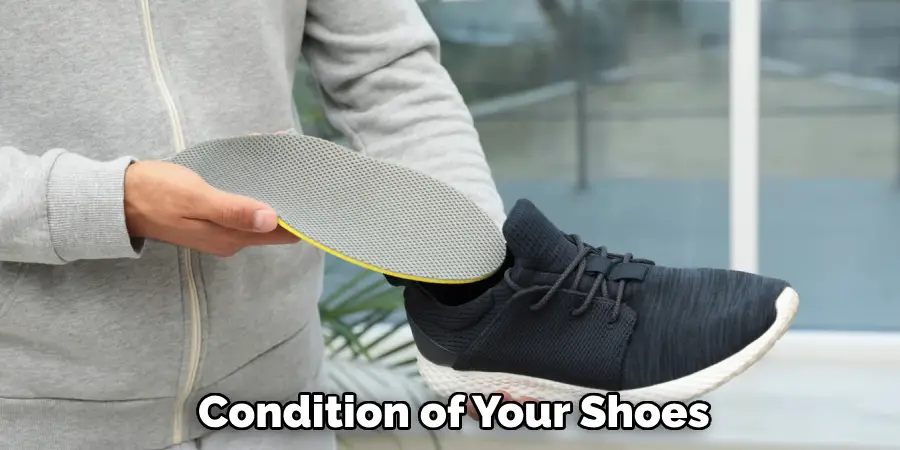
Step 5: Clean the Outsole Regularly
To maintain the slip-resistant properties of your shoes, it is crucial to clean the outsole regularly. Over time, debris such as dirt, oil, and other substances can accumulate in the tread patterns, diminishing their effectiveness. Use a brush or cloth to remove these particles, ensuring the grooves and lugs remain unobstructed.
For more stubborn residues, consider using a mild soap and water solution to clean the surface thoroughly. Keeping the outsole clean not only prolongs the shoe’s lifespan but also ensures that the slip-resistant features continue to provide optimal traction and safety. Regular maintenance is a proactive step in securing a stable footing in slippery environments.
Step 6: Break in Your Shoes Appropriately
New slip-resistant shoes may require a break-in period for maximum comfort and performance. Wear the boots gradually, starting with short periods and progressively increasing the time you have them on. This allows the material to conform to the shape of your feet and enhances the outsole’s flexibility.
During this process, you may notice an improvement in the grip and overall comfort as the shoes adapt to your movements. Properly breaking in your slip-resistant shoes ensures you gain the full benefit of their design features, providing optimal safety and support from the outset.
Step 7: Rotate Between Pairs of Shoes
To ensure the longevity and effectiveness of your slip-resistant shoes, consider rotating between multiple pairs. By alternating shoes, you allow each pair to rest and recover their compression points, reducing wear and tear. This practice extends the lifespan of each pair and ensures that you consistently have reliable footwear available.
Rotating shoes can also help to maintain the integrity of the tread patterns and outsole material, keeping their slip-resistant properties intact and providing continued safety across various work environments.
Step 8: Choose the Right Fit and Size
Selecting the appropriate size and fit for your slip-resistant shoes is crucial in optimizing their effectiveness. Shoes that are too tight can lead to discomfort and restricted movement, while those that are too loose may result in instability and increase the risk of slips. Make sure there is enough room for your toes to move comfortably while ensuring the heel is securely supported without slipping.
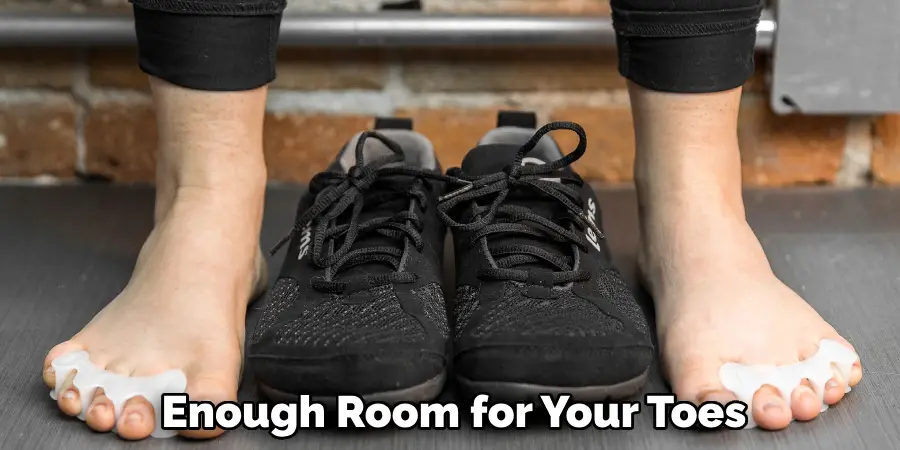
Try on the shoes at the end of the day when your feet are typically at their most significant, and wear the same type of socks you plan to wear with the boots. A perfectly fitted shoe enhances comfort and performance and maximizes the slip-resistant features by providing firm contact with the ground, ensuring your safety in various working conditions.
Step 9: Consult a Professional for Specialized Needs
If you have specific foot concerns or work in environments with unique challenges, consulting a footwear professional or podiatrist is beneficial. They can guide the best slip-resistant shoes tailored to your needs, considering factors such as foot shape, arch support, and any medical considerations.
A professional assessment ensures that you choose footwear that offers optimal slip resistance and supports overall foot health, enhancing comfort and performance in your workplace environment. Their expertise can direct you to options that may not be readily available off-the-shelf, providing a customized solution for maintaining safety and comfort.
Step 10: Test in Varied Environments
To fully assess the versatility and reliability of your slip-resistant shoes, it is essential to test them in various environments and conditions. Different surfaces and elements, such as wet floors, oily surfaces, or icy paths, present unique challenges for footwear traction. You can gauge their effectiveness in maintaining grip and stability by wearing your shoes in these varied scenarios.
Ensure that you pay attention to how the shoes perform on both expected and unexpected surfaces, noting any areas of improvement or limitations. This testing helps verify the shoes’ slip-resistant capabilities, ensuring that they meet the demands of your specific work or lifestyle environments. Consistently challenging the footwear in different situations will provide confidence in their safety performance across various conditions.
By following these steps, you can effectively maintain your slip-resistant shoes and ensure their long-term reliability.
5 Things You Should Avoid
Ignoring the Tread Pattern:
The tread pattern is crucial for slip resistance, providing the necessary grip on slippery surfaces. Avoid shoes with a minimal or worn-out tread pattern, as they will not offer adequate traction.
Overlooking Material Quality:
Not all materials are equal regarding slip resistance. Shoes made from low-quality materials that might not provide sufficient grip or durability in wet or oily conditions should be avoided.
Neglecting Fit and Comfort:
A poor fit can negate the benefits of slip-resistant shoes. Shoes that are too loose or too tight can cause discomfort and even increase the risk of slips and falls, so ensure you choose the correct size.
Disregarding Proper Maintenance:
Dirty or improperly maintained shoes can lose their slip-resistant properties. Avoid neglecting regular cleaning and maintenance, as debris and wear can reduce the effectiveness of the shoe’s grip.

Assuming All Shoes Are Slip Resistant:
Not all shoes advertised as slip-resistant meet the same standards. Avoid thinking that every pair labeled as slip-resistant offers the necessary protection; instead, look for shoes tested and certified to meet industry standards.
Conclusion
Slip-resistant shoes are engineered with specialized features to enhance traction and prevent accidents in slippery conditions. The key to their effectiveness lies in the combination of tread patterns, outsole materials, and structural design. Deep grooves and multidirectional patterns on the tread help channel away liquids, while high-quality rubber or synthetic outsoles maintain flexibility and grip on various surfaces.
Additionally, the shoe’s overall construction supports proper foot positioning and movement, which contributes to stability. Together, these elements ensure that slip-resistant shoes minimize the risk of slips and falls, offering crucial protection in environments where safety is paramount.
Hopefully, the article on how do slip resistant shoes work has provided valuable insights into the various aspects of slip-resistant footwear and how to choose and maintain them for optimal performance.

